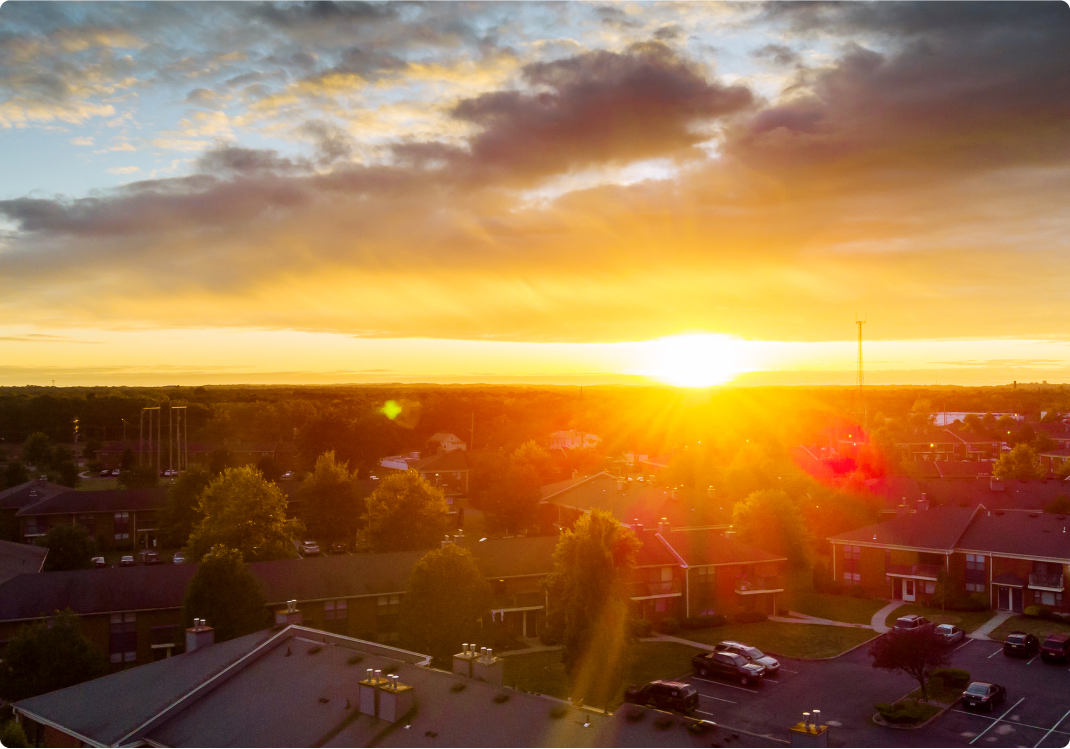4 Benefits of Daylight Saving Time That Help You Spring Forward

Daylight saving time (DST) isn't all bad. In fact, when we move an hour ahead, we enjoy more daytime hours and use less energy. Learn reasons not to dread this time of the year.


Daylight saving time (DST) isn't all bad. In fact, when we move an hour ahead, we enjoy more daytime hours and use less energy. Learn reasons not to dread this time of the year.
We know it’s not fun to spring ahead each year. In fact, though it’s only one day, it throws off your entire schedule, and the sleep effects tend to linger for a few days, right? What’s to appreciate about that? Surprisingly, several things.
Daylight saving time (often mistaken as “daylight savings time”) is the practice of setting the clocks forward one hour from standard time in the spring and backwards one hour in the fall. The “springing forward” usually occurs in March or April, and the “falling back” follows sometime between September and November. The purpose of such a seemingly trivial act? To make better use of natural daylight.
Although less than 40 percent of the countries around the world use daylight saving time, the United States implemented it in 1918, and it doesn’t appear like it’s going to change anytime soon.
Need a reason not to dread getting out of bed an hour earlier? Consider these four benefits of daylight saving time:
What’s better: A fleeting moment of daylight before work (and driving home in the dark) or being able to enjoy the daylight well into the evening hours? That’s what we thought. More light = more time to do what you want or need to do = a happier you.
Research has shown that robbery rates fall an average of 51 percent during the hour of sunset before Daylight Saving Time (a.k.a. the hour that was dark pre-DST) in the spring. Mind. Blown.
When you enjoy more natural daylight, you use less artificial light— and that makes a real impact on the overall cost of energy consumption, with one Department of Energy study finding that the total electricity savings due to DST during DST were around 0.46 to 0.48 percent per day.
Like driving home in the daylight versus the darkness, driving is easier when you can see your surroundings and where you’re going, right? Duh! Studies actually show that we could save hundreds of lives per year if we implemented daylight saving time year-round.
Maintaining smart home security gadgets is made easy with an American Home Shield plan.

Regardless of the benefits, we can’t lie: It’s still going to be a jolt to your typical routine. To make the time change easier, though, follow these four practices before the big day:
Sure, your phone, computer and cable box are going to automatically update, but what about that clock on your microwave? Your oven? Or the one on the wall by your desk? Avoid confusion (and annoyance, for that matter) by turning the clocks ahead one hour beforehand.
The best way to prepare for the lost hour of sleep is to build up to it. For example, starting several days before the time change, make sure your family members are in bed 15–30 minutes before their regular bedtimes. It also helps to ensure you’re well rested the week before.
Daylight saving time means summer’s around the corner. Unfortunately, that also means you’ll be cranking up your air conditioner soon (if you’re not already). Armed with the true daylight saving spirit, consider executing energy-saving tips for your home.
It’s inevitable: You’re going to come across people who were “surprised” by the time change — and they won’t be happy about it. Just keep the above-mentioned benefits of daylight saving time in mind and don’t fall victim to their bad moods. Besides, if you’ve utilized the previous tips, you’re well prepared. Who knows? Maybe you’ll even realize that you don’t dread “springing forward” after all.
The Sunshine Protection Act is a piece of legislation proposed by Senator Marco Rubio that aims to make Daylight Saving Time permanent. In 2022, the Act passed in the Senate with unanimous consent. However, since then, no version of the bill has passed in the House, although similar resolutions have already passed in a number of states, including Florida and Utah.
The debate continues to rage on, with some touting the benefits of permanent Daylight Saving Time, others rehashing the potential benefits of permanent Standard Time, and others enumerating reasons why we should keep Daylight Saving Time the way it is. As discussions unfold, the future of Daylight Saving Time remains uncertain, reflecting a variety of perspectives and priorities.
As we enjoy the extra daylight and the benefits it brings, it’s important to think about other ways you can improve your day-to-day life. Just as Daylight Saving Time helps us make the most of our days, investing in an American Home Shield® home warranty ensures your home systems and appliances are protected year-round. Don't let unexpected breakdowns disrupt your peace of mind or your budget— keep your home running smoothly no matter how many hours of daylight you get.
AHS assumes no responsibility, and specifically disclaims all liability, for your use of any and all information contained herein.
Have a plan for your home when things don't go according to plan
Shop Home Warranties